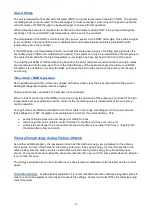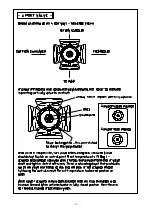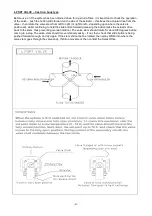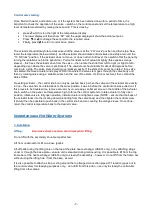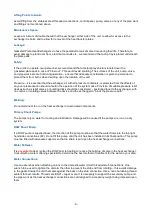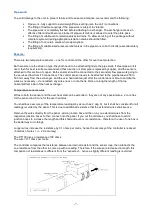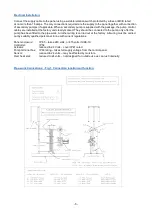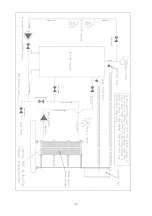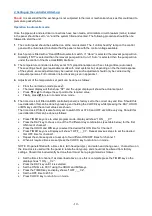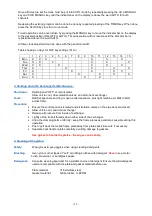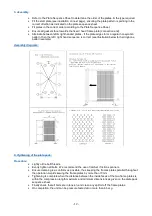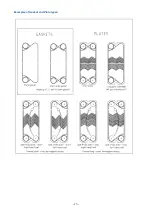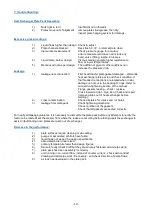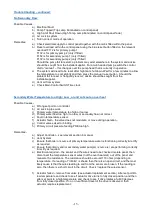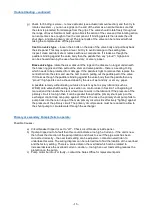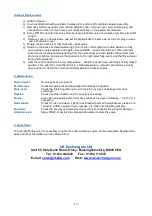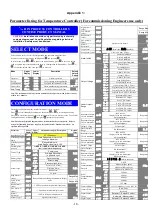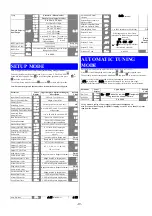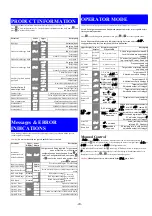
-16-
Trouble Shooting – continued:
g ) Check for binding / seizure – remove actuator (see actuator removal section) and then try to
rotate valve stem – you can use grips on the end of the stem as an aid but make sure that
the stem is protected from damage from the grips. The valve should rotate freely through out
the range of travel. Sediment build up can block the action of the valve and this rotating action
can some times be enough to free the component. If binding persists then isolate the unit,
shut down, and drain primary circuit. The inner parts of the valve can be removed without
taking the complete valve off the pipe work:
Cast iron valve type – loosen the 4 bolts on the side of the valve body and pull body back
the side panel. This may require a lever, but try to avoid damage to the sealing face.
Inspect, clean and lubricate or replace with new components. If it looks as though the
paddle is binding against the valve body then the paddle then any “proud” / high points
can be shaved down by the use of wet and dry, or emery, paper.
Brass valve type, rotate the silver disk until the lugs on the disk are no longer underneath
the brass noggins and then pull out the stem and valve paddle – there is a sealing O-ring
which needs to be protected from damage. If the paddle is tight to remove then replace the
central bolt into the stem and use the bolt to aid in pulling out the paddle part of the valve.
If it looks as though the paddle is binding against the valve body then the paddle then any
“proud” / high points can be shaved down by the use of wet and dry, or emery, paper.
A possible remedy without taking out valve inners may be to spray lubricant (such as
WD40) onto valve shaft bearing (see section on control valve in Section 1 at beginning of
manual) and then locate the stem a few times to work in the lubricant. If the pressure of the
primary circuit is too high then it can be greater than what the primary shunt pump on the
exchanger control loop can pump against. If this is the case, the primary shunt pump fails to
pump back into the return loop of the main primary circuit as it is effectively “fighting” against
the pressure of the primary circuit. The primary circuit pressure must be reduced to allow to
the shunt pump to circulate water through the exchanger.
Primary or secondary Pump(s) fails to operate:
Possible Causes:-
a) Circuit breaker tripped or set to “off” - Check circuit breakers inside panel .
b) If pump tripped out of a fault then this could indicate a too high a Current – if the unit is new
then check the direction of the pump rotation and check to see if the pipe work has been
connected correctly – the over load setting can be adjusted – contact an electrician to
undertake this work. The wiring diagram can be referred too to find the location of the overload
and the factory setting. There is a scaled dial on the overload which can be rotated to
increase/decrease the overload current – caution – too high an over load setting reduces the
protection on the pump.
c) Pump motor burnt out or faulty – contact the Sales Office for replacement parts.

